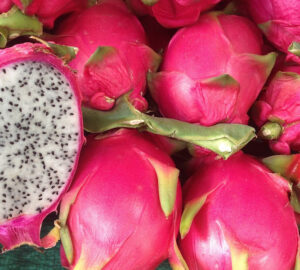As the summer heat mellows and the first hints of autumn approach, garden owners find themselves with a crucial checklist of tasks to ensure their gardens continue to flourish. In this comprehensive guide, we’ll explore the most important and common garden jobs for September, categorized into ornamental gardens, orchards, vegetable gardens and other essential tasks.
Ornamental Gardens: Nurturing Your Botanical Oasis
- Divide and Multiply: September is prime time for dividing and replanting perennials like hostas, daylilies (Hemerocallis) and irises, encouraging healthier growth and preventing overcrowding.
- Plant Spring Blooms: Get a head start on next year’s garden by planting spring-flowering bulbs like tulips and daffodils. For most regions, a good guideline for planting spring-flowering bulbs is in late September through October.
- Prune and Tidy: Trim back overgrown shrubs and remove spent blooms to maintain the garden’s tidy appearance.
- Lawn Love: Revitalize your lawn by fixing bare spots, aerating, overseeding and mowing at a slightly lower height. However, it’s essential not to cut the grass too short, as this can stress the lawn and make it more susceptible to weed invasion and drying out.
- Fall Fertilization: Apply a balanced fertilizer to nourish the soil and fortify your plants for the coming winter.

Orchards and Grapevines: Maximizing Your Harvest
- Fruit Harvest: In September, orchards burst with ripe fruits like apples, pears, and plums. It’s prime time to gather your fruit bounty for fresh consumption or preservation.
- Grape Harvest: For vineyard owners, September is also synonymous with the grape harvest season. Timing varies by grape variety and region, but many vineyards start picking grapes in September. Be sure to follow the specific guidelines for your grape variety to achieve the desired flavor and quality for winemaking or table use.
- Tree and Vine Care: Pruning fruit trees and grapevines can begin in September to shape them, improve airflow and remove dead wood in preparation for the next growing season.
- Pest Control: Continue monitoring for late-season pests in your orchard and vineyard, taking appropriate measures to protect your fruit and grape crops.
- Mulch Matters: Apply a layer of organic mulch around the base of fruit trees to conserve moisture and protect roots.
- Fertilize and Water: Provide a late-season dose of fertilizer and deep watering to support fruit development.

Vegetable Gardens: Abundant Fall Harvests
- Harvest Continues: Keep harvesting ripe vegetables like tomatoes, peppers and beans to enjoy the last flavors of summer.
- Sow Cool-Season Crops: Plant fall crops like spinach, lettuce and radishes for a delicious autumn and winter harvest.
- Soil Enrichment: Add compost or well-rotted manure to replenish nutrients for your soil, preparing it for next year’s crops.
- Weed and Mulch: Remove persistent weeds to prevent them from overwintering, and add a layer of mulch to conserve moisture and regulate soil temperature.
- Preserve Excess: Explore canning, freezing or pickling to preserve surplus produce for the colder months ahead.

Other Essential September Garden Tasks: Beyond the Basics
- Prepare for Next Spring: Begin planning and researching your selections for spring-flowering bulbs, which will be available at upcoming end-of-season sales and ready for planting in the coming weeks.
- Container Care: Refresh container gardens with seasonal plants like pansies, ornamental kale, mums and decorative grasses to bring vibrant colors and textures to your outdoor spaces in the cooler months.
- Perform Tool Maintenance: As gardening tasks continue into the late autumn, make sure to regularly clean, sharpen and appropriately store your gardening tools, ensuring their peak performance throughout the extended gardening season.
- Wildlife Support: In late September through early October, consider installing bird feeders and houses, and leaving some areas untamed to provide refuge and sustenance for local wildlife as they prepare for the cooler months ahead.
- Soil Testing: Take soil samples and send them for analysis to ensure your garden’s nutrient levels and pH are optimized for future growth.
- Pest and Disease Monitoring: Stay vigilant for signs of pests and diseases, addressing them promptly to protect your garden’s health.
- Fall Planting Preparations: Start planning and preparing for any fall plantings or landscaping projects you intend to undertake as the season progresses.

In Full Bloom: A September Symphony in Your Garden
In the symphony of the September garden, every task plays a crucial role in maintaining its beauty and productivity. By following this to-do list tailored to your specific garden areas, you’ll ensure a thriving, visually stunning and bountiful outdoor space. Embrace the changing seasons, and your garden will continue to reward your efforts well into the fall and beyond. Happy gardening!









